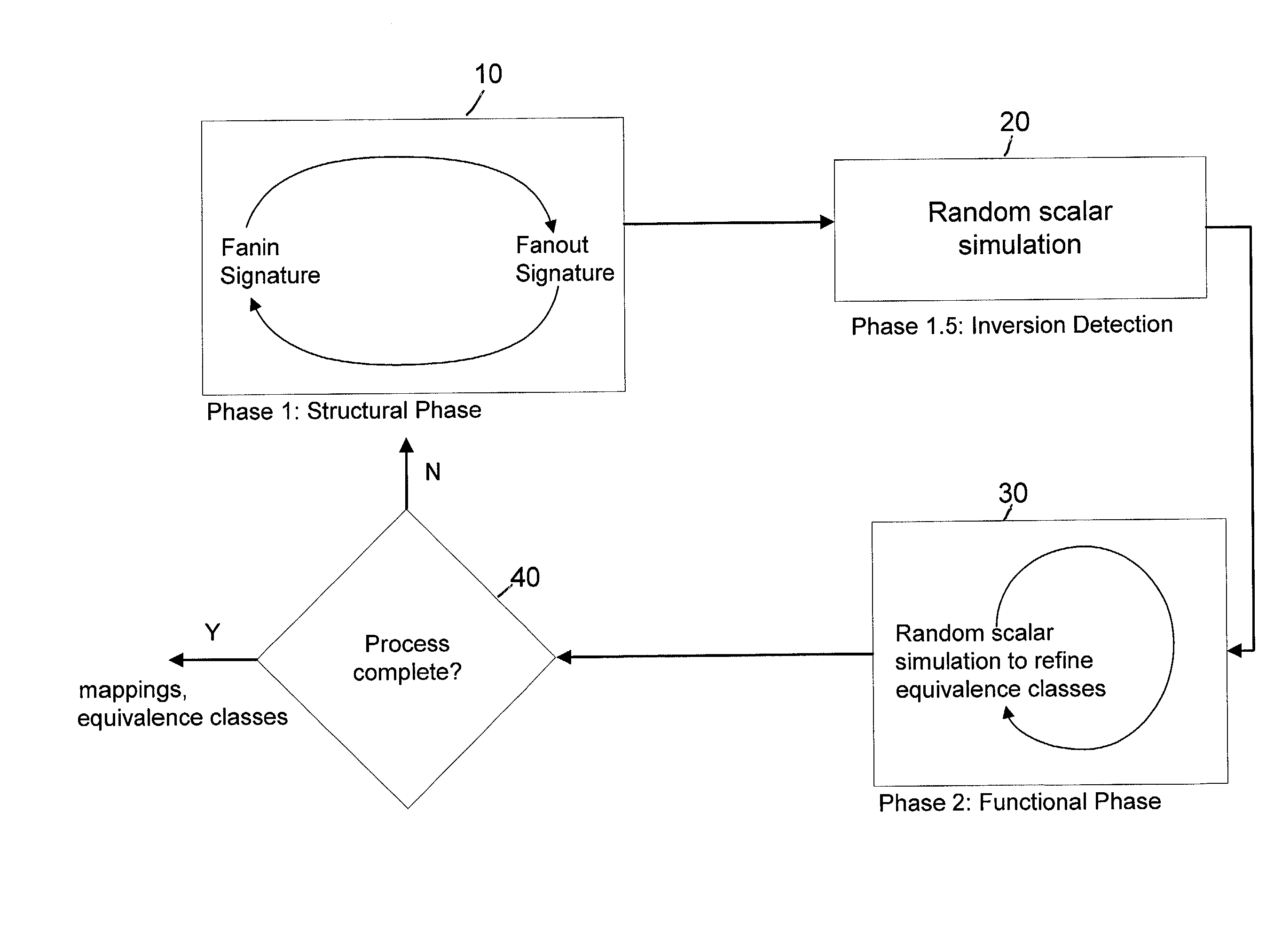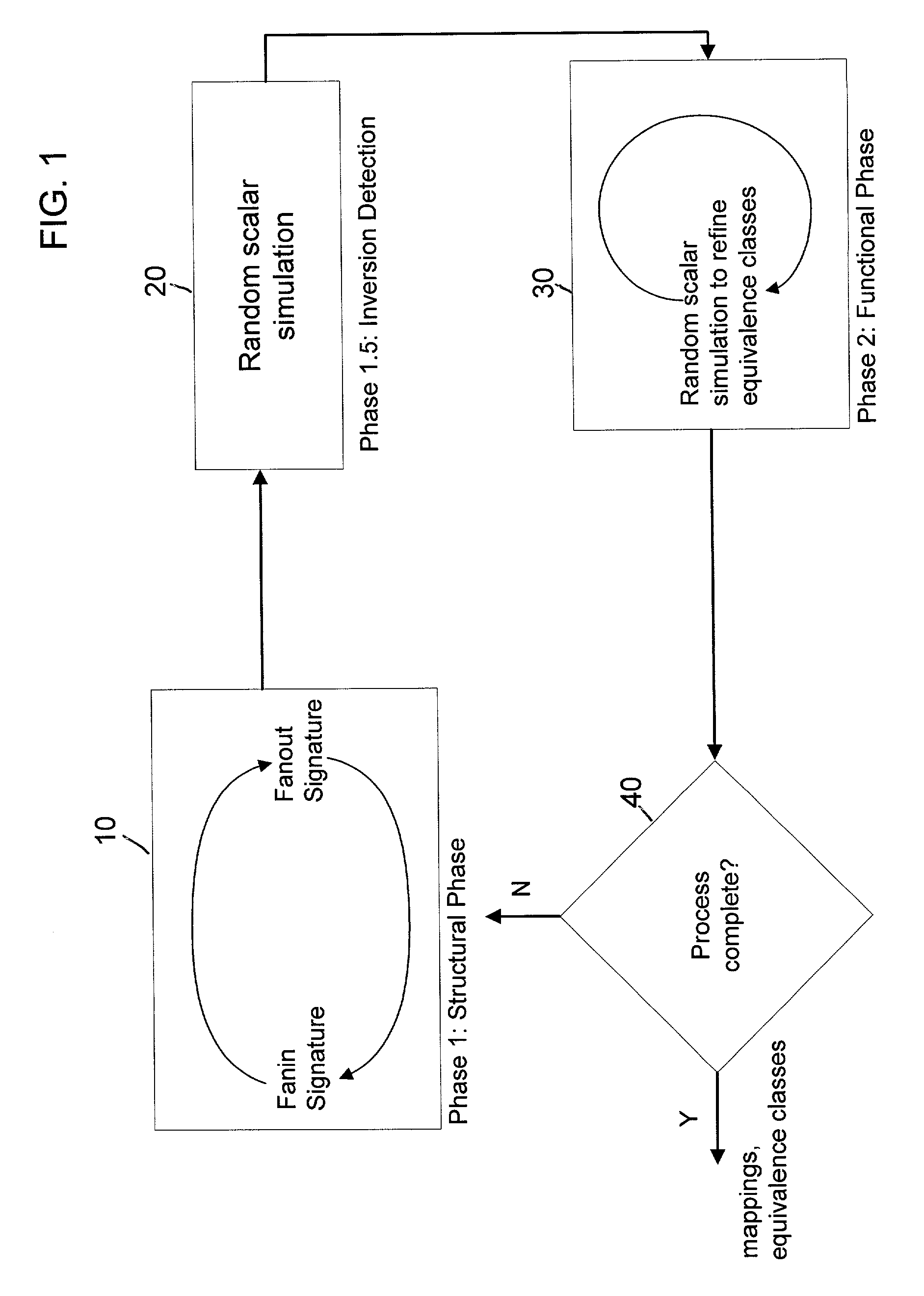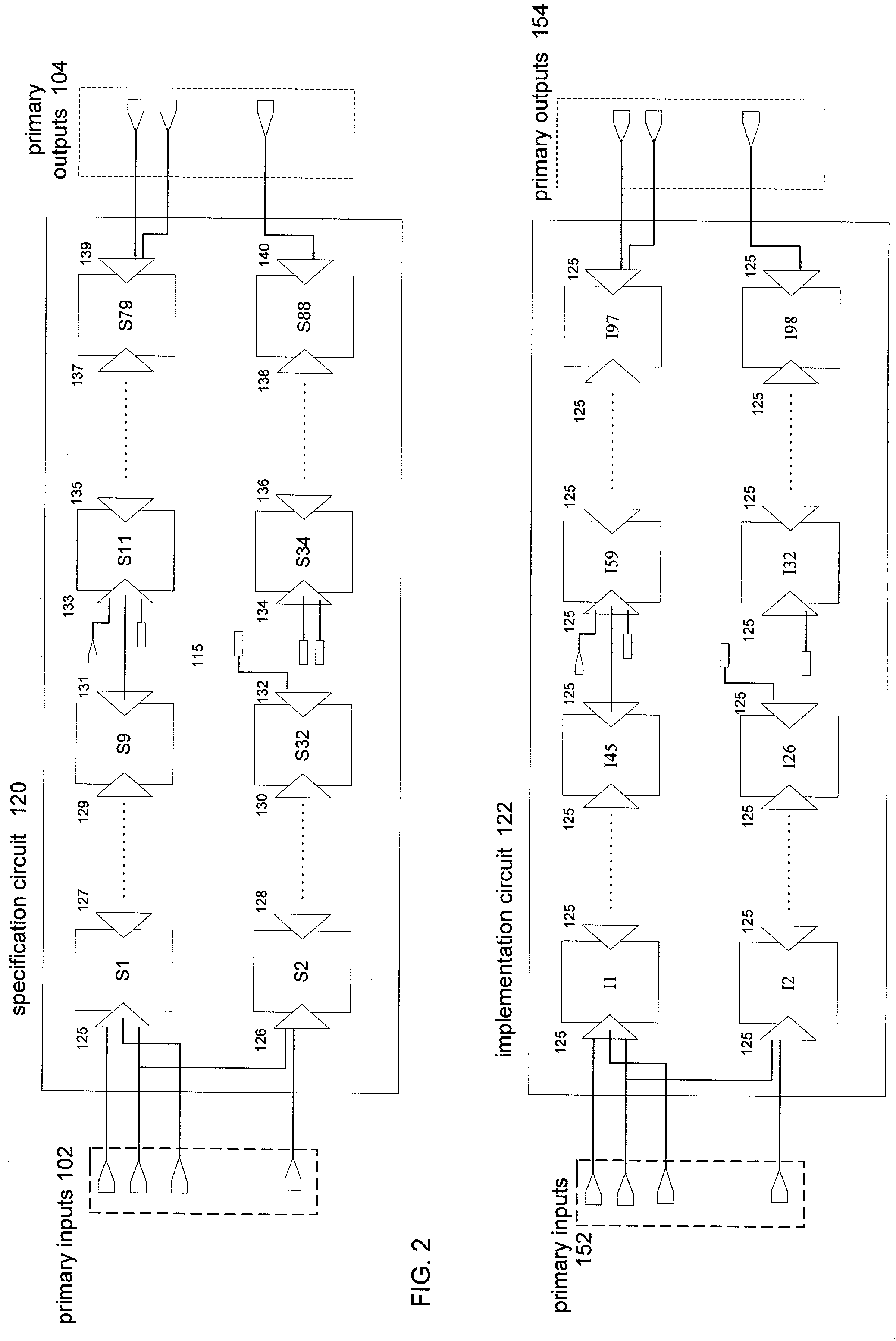System and method for automatically mapping state elements for equivalence verification
a state element and automatic mapping technology, applied in the field of formal equivalence verification, can solve the problems of inability to validate mappings during functional simulations, difficult process of building bdds, and more difficult to verify the correct structure and functionality of circuits designed for these systems
- Summary
- Abstract
- Description
- Claims
- Application Information
AI Technical Summary
Benefits of technology
Problems solved by technology
Method used
Image
Examples
Embodiment Construction
[0015]FIG. 1 illustrates a high-level flow diagram of an embodiment of the automatic state element mapping process according to the present invention. The state element mapping method is divided into three phases: a structural phase (Phase 1) 10, an inversion detection phase (Phase 1.5) 20 and a functional phase (Phase 2) 30. As indicated by the arrows connecting the phases in FIG. 1, the phases are performed in sequential order and may be repeated depending upon whether a threshold criterion is satisfied, indicating that the mapping process is complete.
[0016]During the structural phase, Phase 1, partial fanin signatures of state elements of a first specification circuit are compared to partial fanin signatures of state elements of a second implementation circuit. A fanin signature of a particular element includes an alphabetically sorted list of the primary inputs and other state elements which provide inputs to that state element. Comparison of fanout signatures between state elem...
PUM
 Login to View More
Login to View More Abstract
Description
Claims
Application Information
 Login to View More
Login to View More - R&D
- Intellectual Property
- Life Sciences
- Materials
- Tech Scout
- Unparalleled Data Quality
- Higher Quality Content
- 60% Fewer Hallucinations
Browse by: Latest US Patents, China's latest patents, Technical Efficacy Thesaurus, Application Domain, Technology Topic, Popular Technical Reports.
© 2025 PatSnap. All rights reserved.Legal|Privacy policy|Modern Slavery Act Transparency Statement|Sitemap|About US| Contact US: help@patsnap.com



